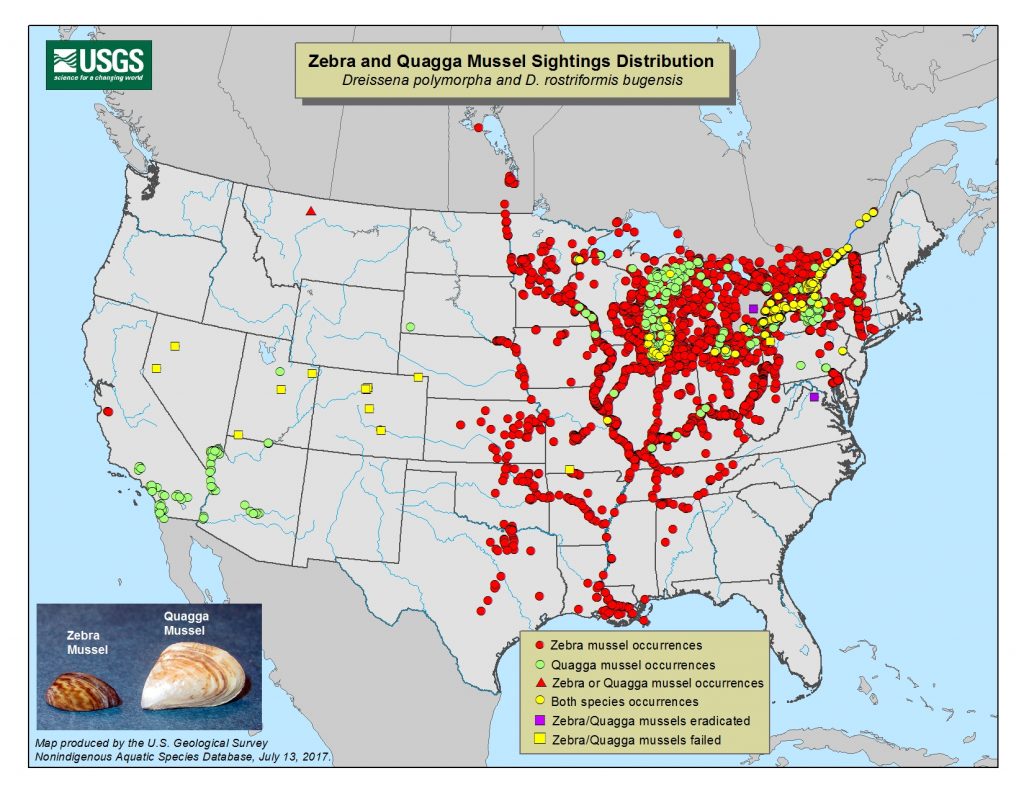Mussel Facts
What are Invasive Mussels?
Invasive mussels alter the dynamics of native ecosystems where they are found and have the potential to disrupt industrial, municipal, and recreational water uses. Zebra mussels (Dreissena polymorpha) and quagga mussels (D. rostriformis bugensis) are two invasive mussel species that were transported to the Great Lakes region through ballast water discharge from ocean-going ships. Since their arrival, the mussels have spread from the Great Lakes throughout North America, as far as the Hudson River in the east and Lake Mead in the west.
Biology
Zebra Mussels
Zebra mussels (Dreissena polymorpha) are small, fingernail-sized mollusks native to the Caspian Sea region of Asia. They were first discovered in the Great Lakes in 1986 in Lake St. Clair. These mussels tend to colonize hard substrates and surfaces in high densities, with as many as tens of thousands living in a square yard. Zebra mussels feed by filtering the water to collect phytoplankton while clinging to the substrate.
Zebra mussels have three life stages – larval, juvenile, and adult. In the larval stage, the mussels live freely in the water column, allowing them to be easily transported to new ecosystems via currents or ballast water. Adult zebra mussels can stay alive for several days outside of water and may also colonize new regions by clinging to the underside of boats that are trailered to new locations.
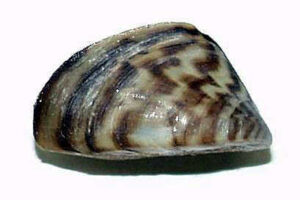
Invasive Zebra Mussel. Photo Credit: USGS NAS

Invasive mussels may be identified by the byssal threads that they use to cling to surfaces. Photo Credit: Minnesota Aquatic Invasive Species Research Center
Quagga Mussels
Quagga mussels (Dreissena bugensis) are fingernail-sized mollusks native to Ukraine. They were first discovered in the Great lakes in 1989 near Lake Erie. While zebra mussels are generally limited to the colonization of hard substances, quagga mussels can colonize soft substrate such as sand or silt at the bottom of lakes. They can also flourish in low-food conditions, allowing them to thrive in areas that zebra mussels cannot. In areas where both mussel species coexist, Quagga mussels often outcompete zebra mussels.
Quagga mussels are extremely effective filter feeders, removing large amounts of phytoplankton and suspended particulates from the water. A single mussel is capable of filtering over a liter of water each day. The spread of quagga mussels has been aided by their prolific breeding, with a single female producing up to one million eggs per year.

Comparison of invasive Zebra Mussel (l) and invasive Quagga Mussel (r). Photo credit: USGS

Invasive Quagga Mussel. Photo credit: USGS
Impacts
Ecological
Through filter feeding, invasive mussels reduce the amount of phytoplankton available for other organisms and increase water clarity, changing the structure of local aquatic communities. The feeding of quagga mussels has dramatically reduced primary production in Lake Michigan and Lake Huron and has contributed to basin-wide population crashes of species which are fundamental to food webs and fisheries such as Diporeia, an invertebrate species. Some studies indicate that invasive mussels may even facilitate the establishment of other harmful invasive species like the rusty crayfish.
Increased water clarity caused by excessive filtration can also lead to a proliferation of benthic algae species, such as Cladophora, the decay of which contributes to foul-smelling “beach muck” seen across the Great Lakes. Additionally, by selectively avoiding toxic algae species like Microcystis, invasive mussels may help facilitate toxic algae blooms in lakes.
As they filter water, invasive mussels retain water-borne toxins within their tissues, exposing mussel-eating fish and waterfowl to illnesses such as botulism. Invasive mussel infestations also threaten native mussel populations by attaching to the native species and smothering them.

Zebra mussels attach to the shells of native mussels, smothering them. Photo Credit: Wisconsin Department of Natural Resources
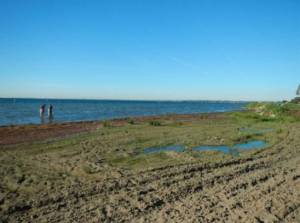
Invasive mussels can help facilitate the appearance of shoreline ‘muck.’ Photo Credit: National Oceanic and Atmospheric Administration
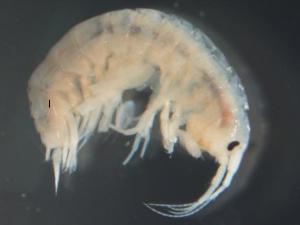
Dipoeria, an essential part of the Great Lakes food web, is threatened by the feeding of Quagga Mussels. Photo Credit: National Oceanic and Atmospheric Administration

The invasive rusty crayfish may benefit from the establishment of invasive mussels. Photo Credit: Wisconsin Department of Natural Resources
Economic
Dense colonies of Invasive mussels can clog intake pipes of water treatment and power plants, reducing pumping capacity and causing significant economic impacts to industries, companies and communities. Recreation-based industries and activities have also been impacted by invasive mussels as docks, break walls, buoys, boats, and beaches have been heavily colonized by these species. The sharp shells of dead mussels can litter beaches and the smell of decaying mussels discourages recreation and reduces tourism.
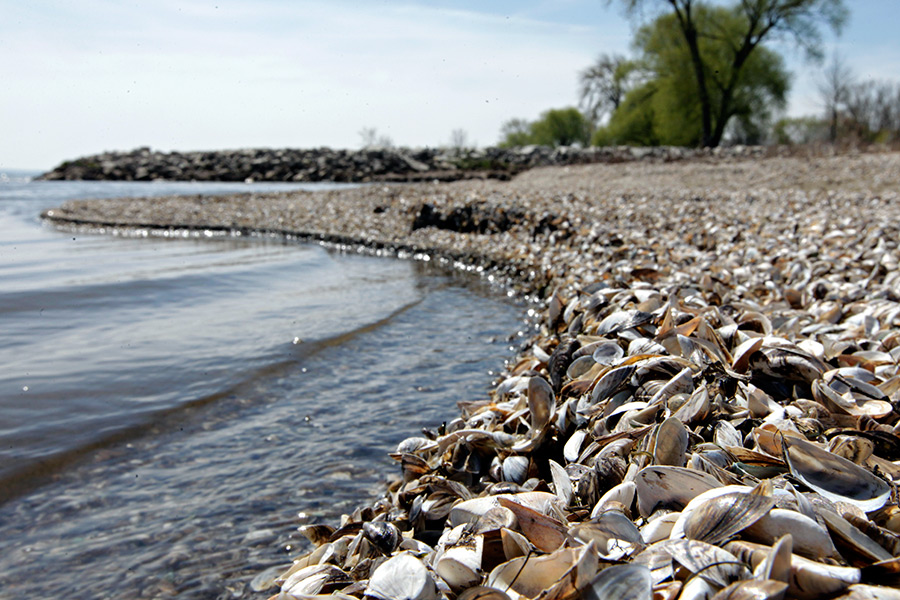
The empty shells of dead zebra mussels litter beaches. Photo credit: Milwaukee Journal Sentinel

Dense colonies of zebra mussels can clog intake pipes. Photo credit: Marrone Bio Innovations, Inc.
Resources & Publications
Zorinsky Lake Zebra Mussels-Summary Poster
US. Corps of Engineers
Zequanox Application Technique Pilot Study on Lake Erie
Megan M. Weber, Marrone Bio Innovations; Michigan Department of Environmental Quality
Zebra Mussels Invade Ontario Waters
Ontario's Invading Species Awareness Program
Riley T. Lovejoy, Alyssa N. Kandow, Jennifer G. Howeth

